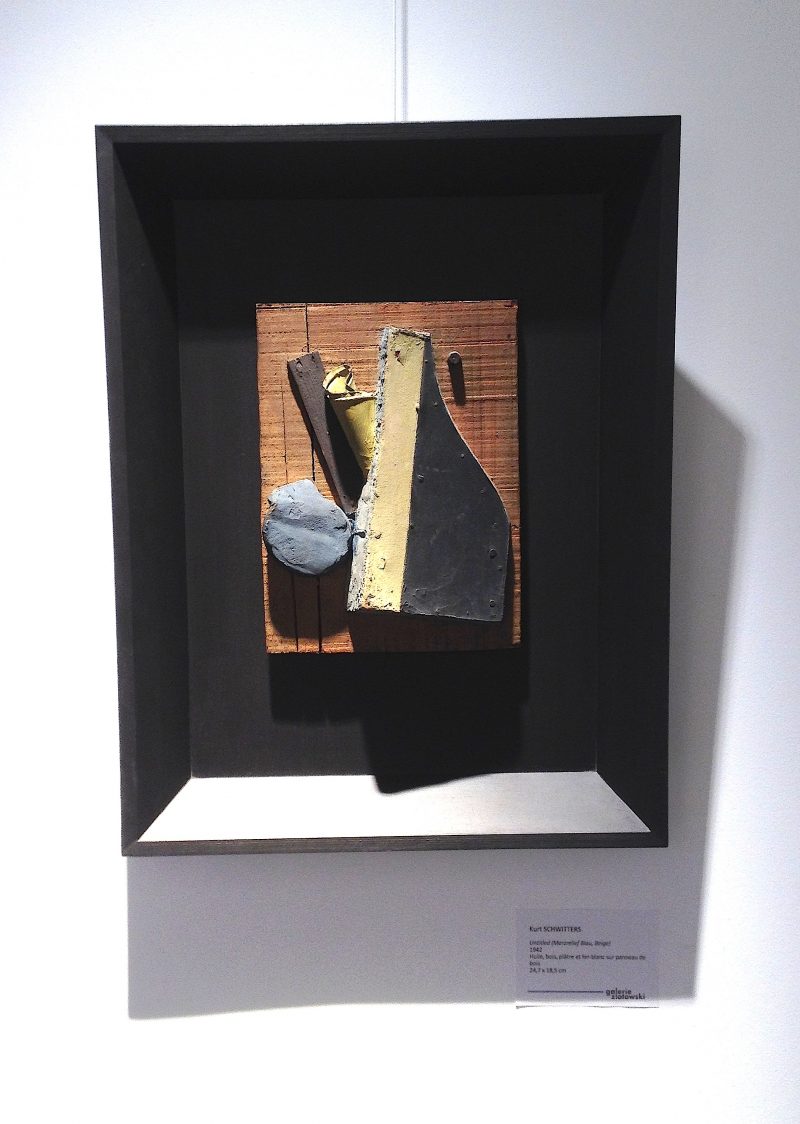In the cut and paste art world, perhaps the single most influential artist was the German Kurt Schwitters. Galerie Zlotowski, a small Rive Gauche gallery, has brought together 13 small collage and assemblage works, dating from 1918 through 1947, that offer a range of Schwitters’ poetic investigations. Here we can see his use of bits of newspapers, technical manuals, public transport tickets, clippings from children’s books, and cut and painted wood scraps arranged in tight, abstract essays.

Born in 1887 in Hannover, Schwitters was an early exponent of post war Dada, but discovered a love for machines in the war factory in Wülfen where he worked as a draftsman. The artist saw the magic of abstraction in the tangle of metal and gears and this led to a new understanding of what could be told in two- and three-dimensional aesthetics.
Schwitters rose to fame along the radical edges of the European art world with a full-throated embrace of Dada, Constructivism, Surrealism, and his famous sound poems. He called his activity “Merz,” which was short for Kommerz (commerce), a Dada construction and stand-in for the artist’s work.
Upon entering into the world of European Dada, Raoul Haussman said famously of one of his first meetings with Schwitters in 1918: “He introduced himself in the Café des Westens. ‘I’m a painter, he said, ‘and I nail my pictures together.'”
These rough but elegant works seem to possess–over time–increasing powers. One could argue that these pieces would map out the aesthetics of the post World War ll chaos. One need only glance at the works of Rauschenberg or Johns to see how castoffs could and would assume meaning and importance. Clearly artists the world over have embraced the put-it-together-now ethic of this work. And, it should be noted, Schwitters’ works are often copied and forged and regularly show up on eBay.
Forced from Germany in the late 1930s because of his art activities, the artist fled first to Norway, then to England after some years in an internment camp. In London, Schwitters continued to explore three-dimensional assemblage and produced a series of poetic jewels like the one pictured here–”Untitled (Merzrelief Blau, Beige)” from 1942. Schwitters died in 1948, a day after he acquired British citizenship.
Kurt Schwitters / Artiste Merz, 30 September – 2 November 2016 at Galerie Zlotowski, 20 Rue de Seine 75006 Paris, France.









